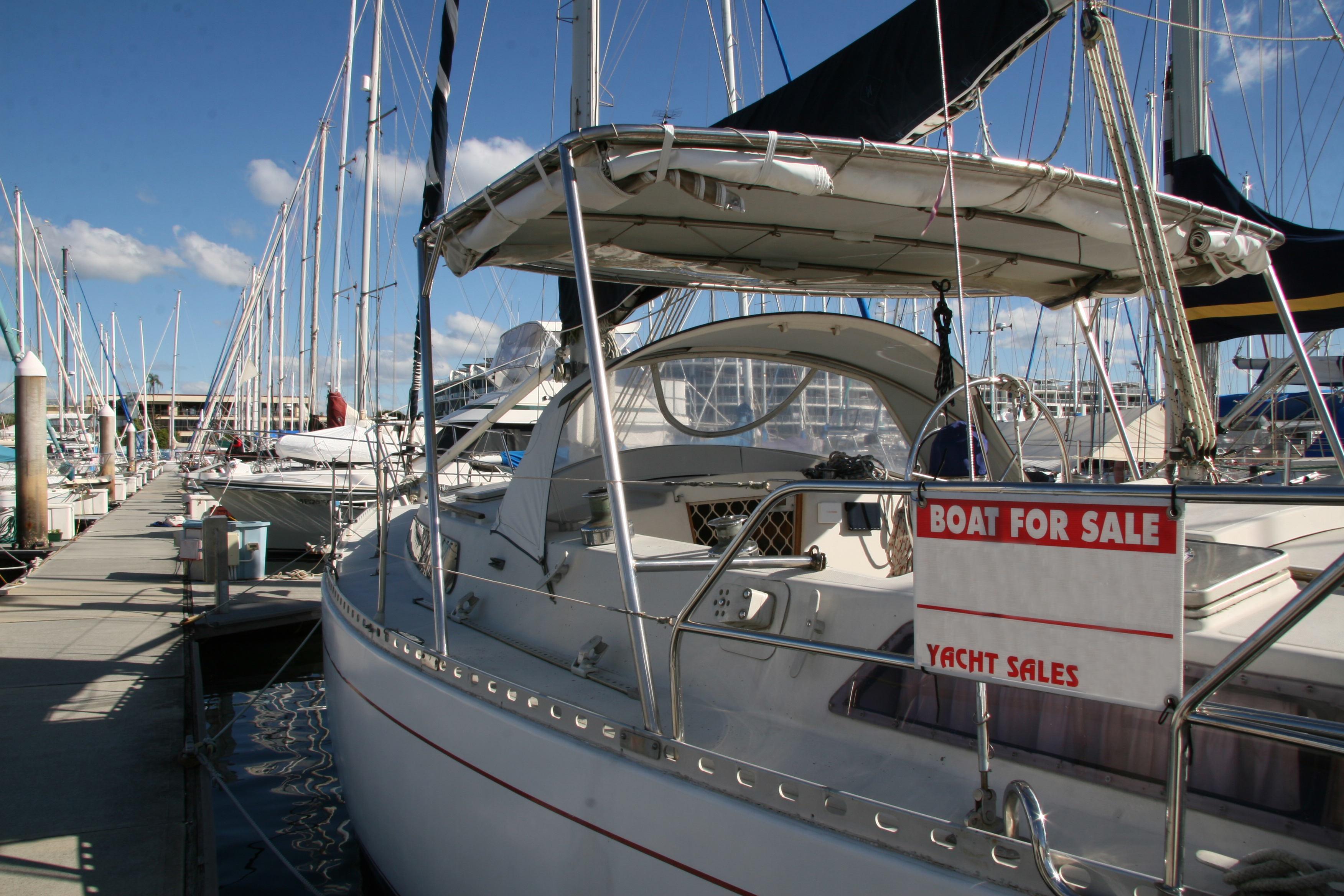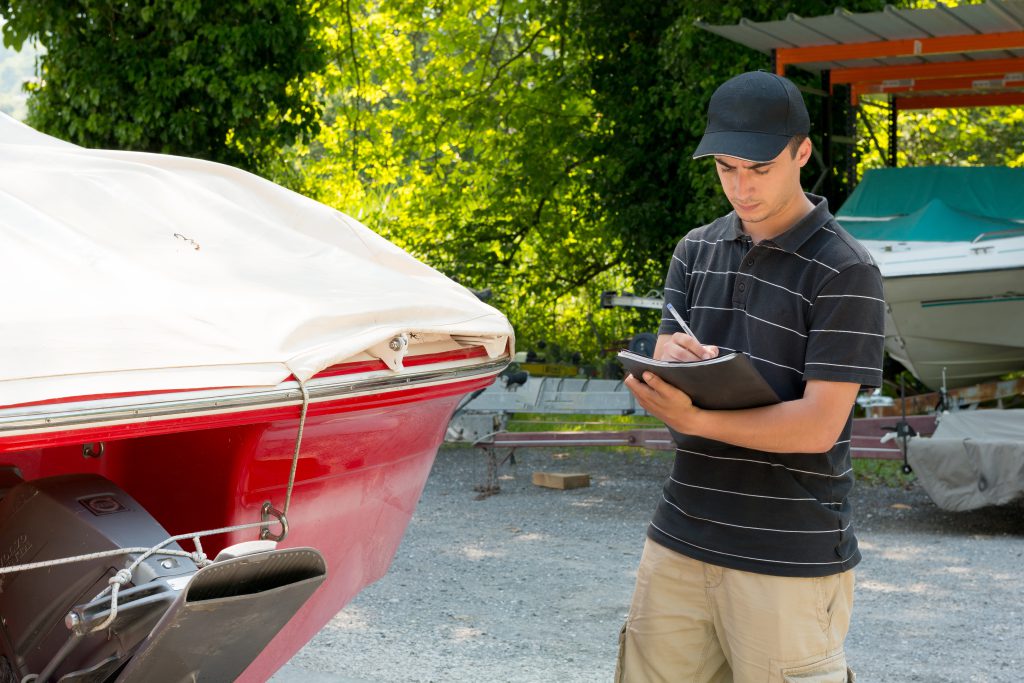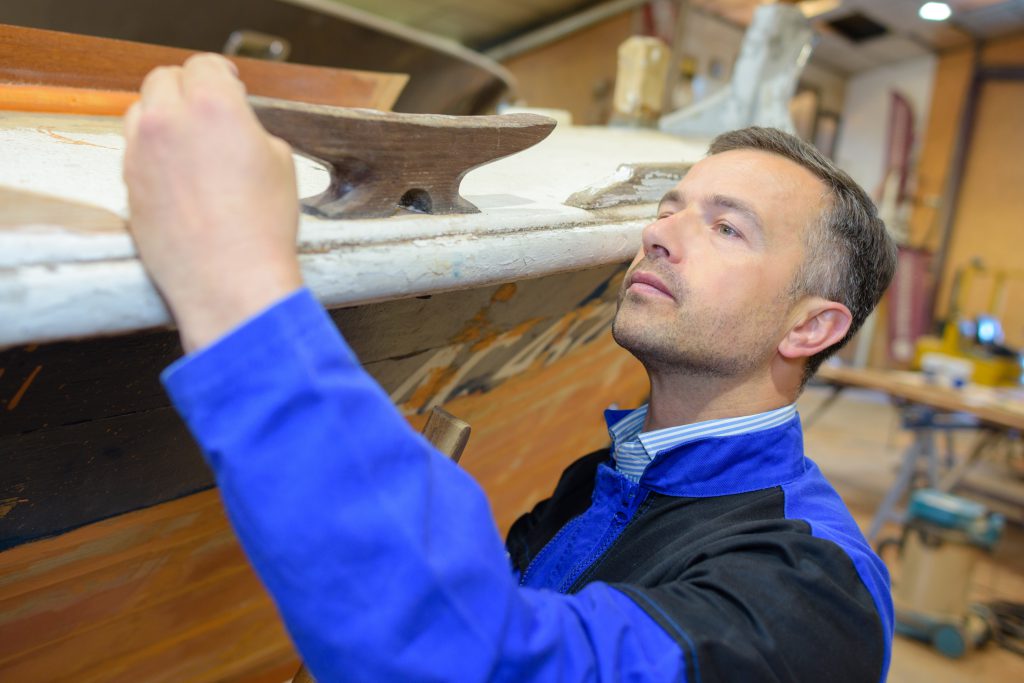Things to Check When Buying a Used Boat (Part 1)
July 1st, 2020 by inavx

by B.J. Porter (Contributing Editor)
Read Part II, Part III, and Part IV of buying a used boat.
There are a lot of things to look for when you’re buying a used boat. This started out as “Five things to check…” but we decided we didn’t want to get boxed in by a numbered list on this important topic.
The first thing I will say in this article and every part of the series is – plan to get a survey. There is no substitute. Once you agree on a price and sign a purchase agreement, budget the money on an accredited surveyor on any boat more complex than a sailing dinghy. It’s just part of the cost of buying a boat.
But I’m getting ahead of myself, because I’m passionate about surveys. Before you spend a nickel on buying a boat we want to give you a few things to check when you first see it. It’s easy at a first showing to be wowed by a pretty boat with nice lines and overlook a few red flag items that should catch your eye (or nose).

SMELLS AND ODORS
Boats can get a lot of weird smells for a lot of reasons. By their nature, a boat left closed up with have a certain fragrance that has more to do with being near moisture and the water than any real problems. Any savvy boat seller will air the boat out before you get there anyway, so it’s not that “closed boat smell” we’re worried about.
Any boat that smells offensive when you walk on it is a turnoff, but some scents can be masked. Outside of this list of smells, also beware of heavy masking smells when you come to a boat. They may hide something the seller doesn’t want you to catch a whiff of.
Septic Odors
A proper head installation won’t smell if you’re standing in the head or near any adjacent cabin space. It won’t permeate the whole boat. You might get a hint if you put your face right next to a hose, but you shouldn’t get it elsewhere.
When you look at a boat pay careful attention for any odors around the heads, and around the holding tank and the space in between. There are several reasons for unpleasant head odors, from blocked vents or saturated hoses to actual leaks of effluent into the cabin space. If you smell something, you need to ask questions.
Bilge Smells
If you stick your head in the bilge and sniff, it won’t smell great. It’s where everything that drips in the boat ends up, and it’s often not clean. But you shouldn’t smell it when you walk in the boat. Not even faintly. Especially if the boat has already been aired out. Check the water level in the bilge; standing water is often a cause of odor.
Mold and Mildew
Cleaning visible mold and mildew can make a boat look nice, but without a deep application of mildew and mold killer there may still be spores left. And smells. Look for mildew on cloth and cushions, but remember it can grow on headliners and smooth surfaces. Many “smooth” boat surfaces like headliners are textured and hard to clean. Even if you don’t see mildew, if you smell it you will want to look for more evidence.
DRIPS AND LEAKS
Many drips and leaks leave signs. Small brown streaks and trains, water stains, delaminated wood, detached headliners and surface materials all can tip you off about leaks on a boat. Leaks aren’t a deal breaker, but know they will mean work and there may be hidden damage. What leaks a little at anchor leaks a lot offshore in foul weather.
Check around the frames of all windows and hatches for telltale water stains. Since leaks travel under closed surfaces, check seams in headliners and near the edge of ceiling surfaces. Also look for bubbling and loose materials.

OBVIOUS DAMAGE OR CORROSION
Chips and dings in a used boat aren’t uncommon, but you want nothing structural or expensive to repair. Crushed fiberglass, bent stanchions, or damaged rub rails may show a boat which had a collision or a few too many close contacts with the pilings.
The engine is a common area to see rust. Check the engine compartments for any rusty components – whether the engine itself, attached devices like alternators, or any of the various pumps or mechanisms near the engine. If you see rust in the engine compartment, it bears a closer look to see where the water is coming from.
THE NEXT TIME
These are three things to keep in mind when you’re at a showing for a used boat. There are more. In the next part of this series we’ll talk about more things to look at in the engine space, walking the decks, and looking over the rigging.


July 02, 2020 at 1:52 am, Kitty Levin said:
Good post on buying used. I’d like to get your thoughts in future posts on negotiating with brokers and surveyors. Timing offers in seasonal, launch/haul markets. More on the buying process you alluded to eg p&s, then survey, and so forth. Thanks.
July 06, 2020 at 2:03 am, Paul Leight said:
I like what you had to say. Most people do not realize what to look for.
July 26, 2020 at 1:54 pm, Frédéric pageau said:
J’ai acheter cette application pour naviguer sur le fleuve st Laurent et il mon envoyer toute les carte des États Unis et de lalaska toute sauf ce qu’il fallait donc belle marde alors je me ferait pas avoir deux fois en achetant une autre applications puis-je dirait c’est comme faite pour que tu en achète avant de voir si l’application est bonne
August 09, 2020 at 2:55 pm, Oli said:
INavX user here… How is the survey done in practice assuming boat needs to be surveyed in water (engine test) and out (below waterline)? Is it reasonable to expect surveyor to make two visits?
May 12, 2022 at 4:28 pm, freelance said:
Depending on the size of the boat, you may need a surveyor for two days. One day for in water and sea trial, one day for out of the water examination.
When we bought a Hallberg-Rassy 53, the survey was complex enough that it took the better part of four days to go through everything.
A smaller boat though, you can do a short haul in the morning, or haul it before the survey to let it dry out. Then splash it once the out of water parts are done and do the sea trial.
August 11, 2020 at 10:55 am, Erich Püttmann said:
Ein schöner Artikel! Ich freue mich auf den Nächsten.
August 16, 2020 at 8:51 pm, w sanders said:
Simple and good advice! Everyone should follow👍
September 04, 2020 at 4:21 pm, Things to Check When Buying a Used Boat (Part Two) | iNavX said:
[…] Back in July we started a series on things to look for when buying a used boat. […]
December 17, 2020 at 10:24 pm, More Things to Check When Buying a Used Boat (part 3) | iNavX said:
[…] Part I, Part II, and Part IV of buying a used […]
December 17, 2020 at 10:25 pm, More Things to Check When Buying a Used Boat -Part 4 | iNavX said:
[…] Part I, Part II, and Part III of buying a used […]
January 05, 2021 at 12:53 am, Charlotte Fleet said:
My parents want to buy a used boat for our family to take on a trip to Lake Powell next summer. I appreciate you saying that it is important to check for mold or mildew in hidden sports before buying a used boat. I will be sure to have my parents check for those things before they choose a boat to buy.
March 11, 2021 at 3:17 pm, When Your Dream Boat Goes Bad | iNavX said:
[…] you haven’t read our series on “Things to Look for When Buying a Boat” you might want to give it a […]
August 09, 2021 at 2:30 pm, Buying a Boat in a Seller’s Market? Don’t Forget the Survey | iNavX said:
[…] a Boat? It’s time to follow up our articles on buying a boat, dealing with a bad survey, and why you should almost always get a survey when buying a boat. This […]